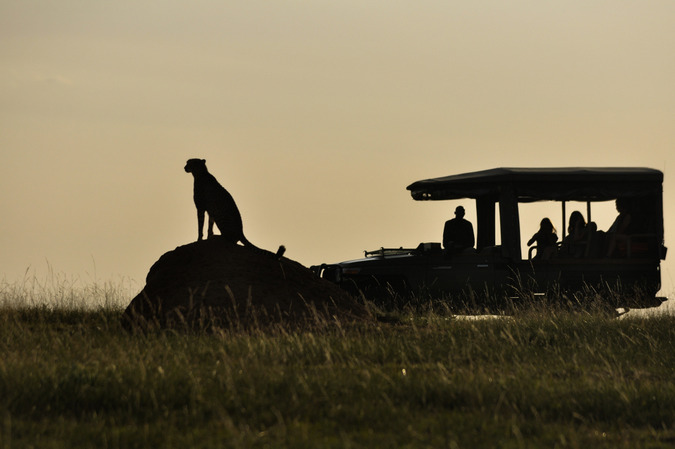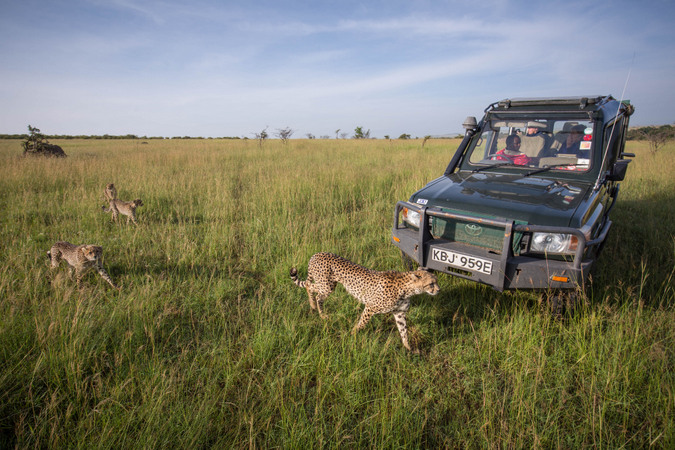
Sourced from third-party website: Mara Predator Conservation Programme, written by Dr. Femke Broekhuis, KWT Scientific Associate
Cheetahs have experienced drastic population declines and there are only ~7000 mature individuals left in Africa. The number of cubs that survive to independence is crucial for population growth. Cheetahs have relatively big litters, ranging from one to six cubs. It is thought that they have such large litters to compensate for the high natural mortality of their cubs. In neighbouring Serengeti National Park, less than 5% of cubs reach independence. Cheetah cubs can succumb to various factors including predation by other predators, abandonment, poor health and fires. However, there are other factors, such as habitat and tourism, that are believed to also have an impact. These other factors have, until now, not been explored, so my aim was to determine the effect of the following on the number of cubs that reach independence in the Maasai Mara National Reserve in Kenya:
• Habitat
• Tourist abundance
• Lion abundance
• Spotted hyena abundance
Between 1st June 2013 and 31st October 2017 data was collected on how many cheetah cubs were seen and how many reached independence. At the same time, data were also collected on the number of tourists, lions and spotted hyenas.
Key findings
The amount of open habitat and high tourist abundance both limited the number of cubs cheetahs raised to independence. More specifically, cheetahs in open habitats on average raised fewer than two cubs to independence compared to approximately three cubs for mother’s residing in denser habitat such as acacia woodland. Similarly, females in areas with a lot of tourists on average raised one cub or less to independence compared to more than two cubs in low tourist areas. Neither lion nor spotted hyena abundance was found to have an impact on cub recruitment.
While this study shows that high tourist abundance has a negative impact on cheetah cub recruitment, it is important to note that tourism also plays an important, positive role in cheetah conservation through, for example, the creation and maintenance of protected areas and wildlife conservancies and positively influencing attitudes and behavioural intentions of local people towards predators. However, the results presented here are worrying as growth rates for cheetahs inside the wildlife areas need to be high if they are to compensate for declines outside the wildlife areas.

Recommendations
The following recommendations are based on the above findings:
Habitat management
While cheetahs are often considered to be an open plains species, denser vegetation is important for cub survival. In areas where habitat is managed, care should be taken that a diversity of habitats are available. For example, areas that are burned could have a negative effect on cheetah cub recruitment as by attracting female cheetahs with cubs to open areas where prey abundance is high, cub recruitment is likely to be low.
Tourist management
Cheetahs, especially with cubs, are a major tourist attraction and commonly attract large numbers of vehicles (during this study, we observed a case of 64 vehicles present at one sighting over a period of 2 hours). It is important that strict viewing guidelines are implemented and enforced. Actions that could be taken to ensure that tourists do not have a negative impact on cheetahs include:
• allowing no more than five vehicles at a cheetah sighting;
• ensuring that no tourist vehicles are allowed near a cheetah lair (den);
• ensuring that vehicles keep a minimum distance of 30m at a cheetah sighting;
• ensuring that noise levels and general disturbance at sightings are kept to a minimum;
• ensuring that vehicles do not separate mothers and cubs;
• and that cheetahs on a kill are not enclosed by vehicles so that they can detect approaching danger.
These guidelines would ideally be incorporated into management policies and distributed to tourists upon arrival with rangers ensuring that these guidelines are respected.
This research would not have been possible without the financial support from the African Wildlife Foundation, BAND foundation, Vidda Foundation and private donations made through the Kenya Wildlife Trust.
Full report: Ecology and Evolution; Broekhuis, F. (2018): Natural and anthropogenic drivers of cub recruitment in a large carnivore.
To comment on this story: Login (or sign up) to our app here - it's a troll-free safe place 🙂.![]()








